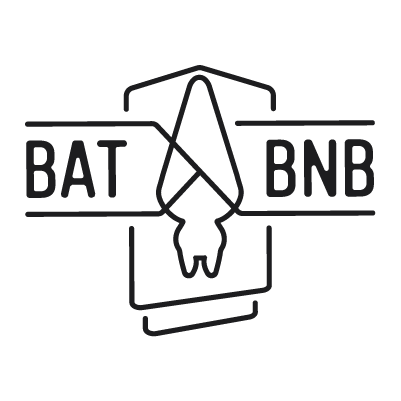Utilizing Bat Houses in Research Projects
August 12 2022 – Jessica Woodend
Palmetto Bluff Conservancy was one of the recipients of a BatBnB during our Spring Donations this year. We were so excited when we saw their nomination come through, because we actually had one of our prototypes mounted there when we were first designing our BatBnBs.
We chatted with staff member, Lydia Moore, to hear about the work they are doing at the Conservancy regarding bats, and how they used a BatBnB to help learn more about a species.
Please tell us a bit about the Conservancy, and your role there.
The Palmetto Bluff Conservancy is a 501(c)(3) conservation nonprofit in Bluffton, South Carolina. We are stewards of the land and keepers of the cultural and natural history of Palmetto Bluff, a 20,000-acre residential community. We have a diverse staff: from archaeologists who catalog artifacts of past residents of this land, to our land and wildlife management team which conducts prescribed burns and healthy herd management for white-tailed deer.
My official job title is Research and Education Coordinator, and I oversee all of our ecological research and environmental education programs. Education is the central tenet of everything we do at the Bluff, and we connect an education event to all of our land management and research programs. We have a fantastic educator on staff who leads hikes and birding excursions. Most of our events are free and open to the public. Email us at: info@pbconservancy.org to sign up for our newsletter and learn more! In addition to environmental education, ecological research is the bulk of what I do for the Conservancy.

We set up two triple high net systems to catch a colony of bats leaving a BatBnB house at a private residence at Palmetto Bluff.
What are some of the research projects taking place at the Conservancy?
My research background is community ecology with an emphasis on bats. Palmetto Bluff established itself as a long-term bat monitoring site in 2015, when the Conservancy hosted a Bat Blitz through the Southeastern Bat Diversity Network. I was hired as the biologist for the Conservancy in 2018 and, since this time, we have begun several new research initiatives. Our current research projects range from understanding what factors influence bluebird nest box occupancy, to evaluating the effects of land-use change on sensitive species, to documenting community composition of rodent communities in common coastal habitats. However, our primary research focus is the plight of bats.
Seminole bats are the most common species we catch in mist nets at the Bluff. This is a foliage-roosting species, meaning they roost among the leaves and pine needles of trees, often high in the canopy. Unfortunately, we do not know much about their day-roosting habits in the coastal plain. We have two concurrent studies evaluating characteristics of trees used as day-roosts by this species. Sam Holst, Conservancy Research Fellow, is in the midst of tracking Seminole bats for his second field season. We are grateful to the Friends of the Palmetto Bluff Conservancy for funding this position for two years.
We also collaborate with researchers at other institutions. We have an ongoing collaboration with Kennesaw State University that is looking at how the timing of activity of bats within a night is influenced by the temporal changes in composition of insect communities within a night. Basically, we are looking at whether the timing of various insect families is influencing when certain species of bats are foraging. Unfortunately, we cannot say that bats are definitively eating the insects that are available, but we are looking at correlations in the timing of their activity. Fascinating stuff!

Pete Pattavina (US Fish and Wildlife Service) and Jason Robinson (Lotus Enterprises, LLC) swab bats for the NABat One Health initiative, a project spearheaded and overseen by Bat Conservation International.
More specifically, you are monitoring bats. How do you do this, and what are you learning?
We primarily use mist nets to monitor bats at Palmetto Bluff. We set up these large nets in a way that (hopefully) makes it difficult for bats to see the nets. Check out this post I wrote to learn specifics of how we set up our nets.
Once we catch a bat, we extract it from the net and take standard measurements, including weight, forearm length, species, sex, and reproductive condition. We band the majority of the bats we catch at Palmetto Bluff with a tiny band that looks like a cuff bracelet. Each band has a unique identifier, so if we catch a bat in the future we know exactly who it is. If we are interested in finding where the bat is going in the day, we can glue a transmitter between the bat’s shoulder blades and use a receiver to pick up the frequency emitted by the transmitter. Don’t worry – the bat is not stuck with the transmitter forever! We clip fur between the bat’s shoulder blades before we glue on the transmitter. Once the fur grows back it pushes the transmitter off the bat.
The purpose of this entire process is to monitor population trends and document changes in community composition over time. It is very difficult to catch bats because they are adept at evading or chewing their way out of our nets. Catching a bat a second (or third, or fourth) time is increasingly difficult because they have wizened up to what a net means. Even so, we have about an 8% recapture rate. We are finding that the individual bats we are catching multiple times are being caught at either the same location as their first capture or are within a half mile of it.
The tri-colored bat is proposed for listing under the Endangered Species Act due to severe population declines throughout most of its range. Here on the coast, we are fortunate to consistently catch tri-coloreds. This is actually the fourth most common species we catch and makes up roughly 17% of our total captures from 2015 – today. It is encouraging to continue catching pregnant and lactating females in the spring and early summer. We will continue to document the occurrence and timing of their reproductive activities.

Bats were extracted from the net and each bat was placed in its own bag. The bags were placed on a line in the order they were removed from the net to keep the handling time for each bat as low as possible.
How do you use bat houses at the Conservancy?
We mostly use bat houses for educational purposes. We will soon be putting up several houses near The Farm at Palmetto Bluff, where there is a pond surrounded by pines.
This spring, we were fortunate to be able to net a BatBnB house at a private residence at Palmetto Bluff. This is the first time we netted a bat house and it was quite the experience! The property owners have been diligently recording the emergence time and numbers of their bat neighbors, and we knew there would be between ~65-90 bats flying from this box at dusk. There were five bat handlers in attendance, including Pete Pattavina from US Fish and Wildlife Service and our collaborator Jason Robinson from Lotus Enterprises, LLC. The primary goal of netting this bat house was to swab the bats for microorganisms, which will help monitor bat health. All swabbing was done by Pete Pattavina in collaboration with the NABat One Health initiative, which is a nationwide project through Bat Conservation International (BCI). The swabs were sent to BCI’s lab for processing and we cannot wait to hear the results!
There are a couple of other exciting observations that came from this night of netting. The bat house was erected in 2021, and it was almost immediately occupied by a colony of evening bats. I had not been to the bat house between 2021 and when we netted in May of 2022, and I was fully expecting to find evening bats in our nets. But surprise! Instead of evening bats, we had Brazilian free-tailed bats flying into our nets! This is a species we had documented living in buildings at Palmetto Bluff but had not previously captured in a net. What a thrill to process roughly 40 Brazilian free-tailed bats in one night! We are forever grateful to the property owners for letting us net their bats and hope to repeat this experience next year.

The bat house was occupied by Brazilian free-tailed bats!
What other equipment do you use for monitoring bats?
We will be starting a project this year that uses acoustic detectors to monitor trends in community composition over time. This is a long-term project that is focused on how changes on the landscape affect presence and activity of bats.
Unfortunately, tracking bats to a roost tree is not enough to understand what is attracting the bat to that particular tree. We use simple forestry equipment to measure characteristics of the roost tree, as well as characteristics of the surrounding area, to get a better understanding of what the bat might be selecting when it makes its choice of where to spend its daytime hours. These characteristics include the circumference of the roost tree, roost tree height, canopy cover, and an understanding of how thick the midstory is. We use these same forestry techniques on trees (and their immediate surroundings) that are picked at random by computer software. This allows us to compare characteristics of a used tree to a tree that was available to the bat but not used for roosting.
Do you know how long Palmetto Bluff Conservancy has been utilizing bat houses?
There have been a few bat houses placed around the property – both at private residences and on community land – since before my time with the Conservancy. From a research perspective, we really just began incorporating bat houses in our monitoring program. Our experience this past spring was encouraging and has opened a whole suite of new research topics for us. Stay tuned for future projects using bat houses!

Brazilian free-tailed bats get their name from their tail. For most bats in South Carolina, the tail membrane extends to the tip of the bat’s tail. In free-tailed bats the tail membrane only extends part of the way down the tail, making the tail look “free.”
What has been one of your favorite experiences working with bats at Palmetto Bluff?
There are so many, how do you pick just one?! I’ll mention two favorites: The first is seeing the changes in reproductive condition throughout the course of a year. We try to start netting early in the spring before bats are obviously pregnant. After a few weeks we start to see females with tummies showing their pregnancies, and I love seeing how their stomach’s get bigger and bigger throughout the spring. How can they fly with those big bellies?! Then we find females that are clearly nursing pups. And, finally, we catch juveniles just beginning to fly! They are so awkward compared to the adults. I love watching this pattern progress throughout the year.
My second favorite experience is watching the excitement of a bat biologist when they see a northern yellow bat for the first time. We don’t catch them often, but when we do it is an exhilarating experience that I love to share!


0 comments